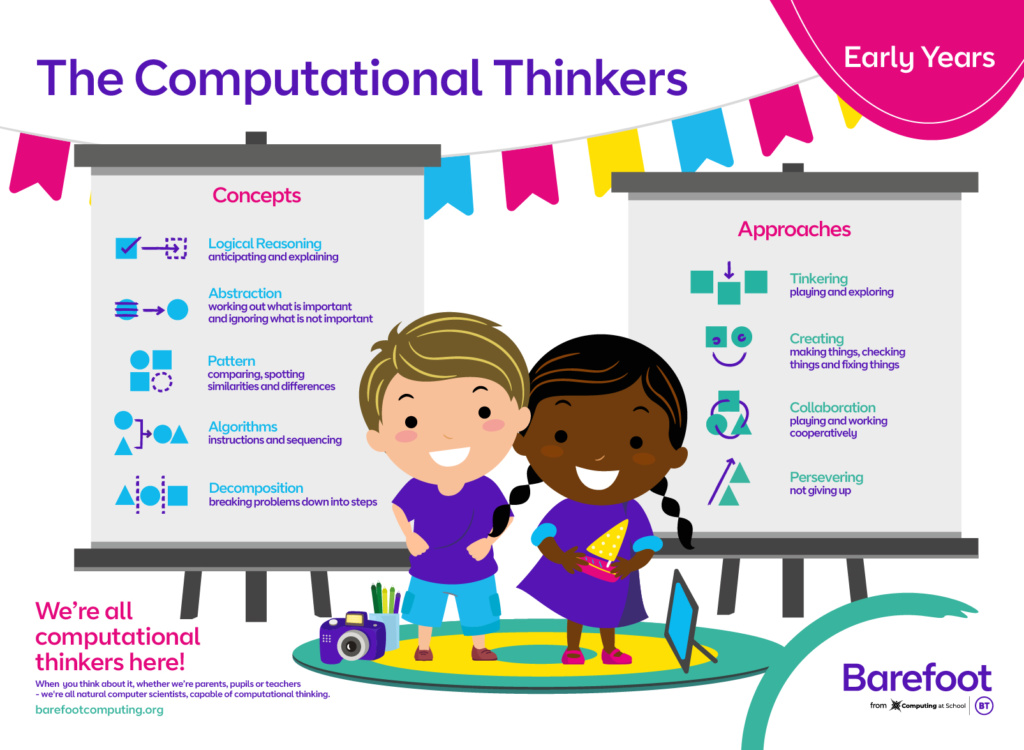
Barefoot is looking for schools to trial its new resources that could set five million children on the road to success in a digital world.
In 2014, Barefoot was set up by the British Computer Society (BCS), The Chartered Institute of IT and their Computing at School network with funding from The Department for Education. Their role was to prepare primary school teachers for the changing computing curriculum.
Barefoot exists to boost teachers’ knowledge, save them time and help them bring computing to life within almost any subject. They provide free lessons, home learning, engaging teacher workshops and helpful online guides. These have been developed by teachers through Computing at School.
The importance of computational thinking
Once the Covid-19 pandemic closed our schools and learning moved online the public started to take an interest in digital competency.
This in turn put a renewed focus on how we teach Computational Thinking which is a set of foundational thinking concepts and approaches.
What is Computational Thinking?
The English Computing National Curriculum takes this approach stating in the purpose of study “a high-quality computing education equips pupils to use computational thinking and creativity to understand and change the world” (DfE, 2013).
Seymour Papert, who coined the term Computational Thinking, had a constructionist approach to learning about programming and it is still a bedrock for many when teaching programming in primary and secondary schools.
Recently however, Computational Thinking has become synonymous with teaching coding. This has spread like wildfire – appearing in international computing education research, curriculum development, teaching resources and teacher professional development.
However, there is no agreement on what the term means and how it should be taught. Some educationalists believe Computational Thinking includes high-level technical concepts such as abstraction, decomposition and generalisation. Others would include softer people skills such as collaboration and perseverance.
Will it work in early years?
Research shows that teaching computing to primary school children is limited, and in early years it is virtually non-existent. Learning about Computational Thinking in early years settings is new. We all need to work together to decide how, and if, we should include this subject to enrich pupils’ learning experiences.
To fill this gap, Barefoot has recently been working with BT and Computing at School. Now they are launching their first-ever set of early years resources – extending the current primary (5-11 age range) provision. The materials incorporate simple definitions of concepts and approaches, simplified notes on vocabulary and more.
Barefoot’s role
We’ve created a range of enjoyable, free resources and activities based around computational thinking concepts and approaches. These help you to teach your pupils the necessary problem-solving skills needed for everyday life.
The resources are collaborative, and they offer options for use both in the classroom and at home. They are cross-curricular, so you can slot them into your teaching where you see fit, in order to boost engagement or inject a little bit of something different into the classroom!
Using the Barefoot parts of our body picture cards to prompt discussion, children are asked What are your eyes for? Are these eyes the same or different? Is eye colour important
The activities show how computational thinking concepts might be presented in early years teaching settings through activities such as water play, outdoor play, role play, games and challenges.
Each resource has a description, key questions, and assessment support. Busy Bodies is a set of four activities that help children discover how bodies move and grow, the Parts of Our Body activity develops children’s computational thinking of logic, pattern and abstraction.
How to get involved
Barefoot will be reviewing the material based on practitioner feedback. We will be producing some case studies and are looking for schools that would like to take part.
If you would like to try the resources, please download them from the Barefoot website. If you would like to take part in the case study or provide any feedback, please email enquiries@barefootcomputing.org Just add ‘Early Years’ in the subject line.
Register for free
No Credit Card required
- Register for free
- Free TeachingTimes Report every month